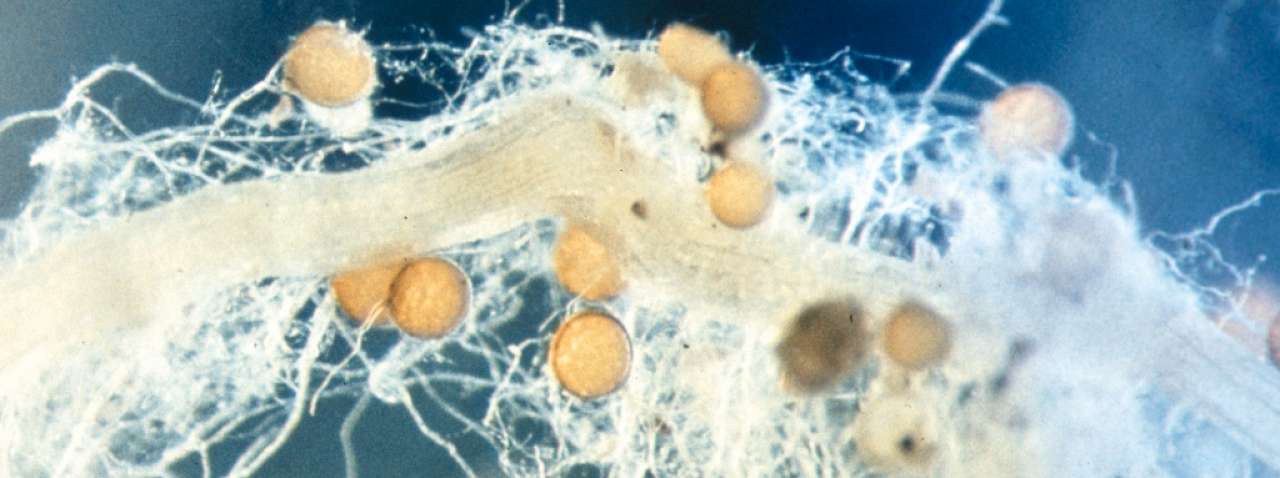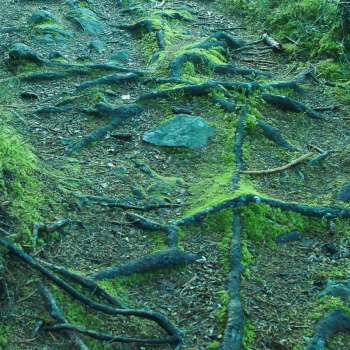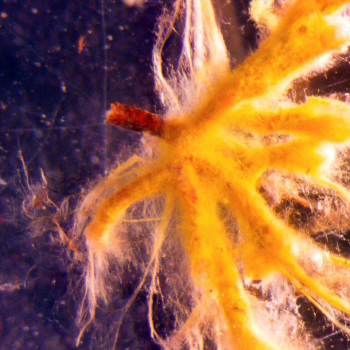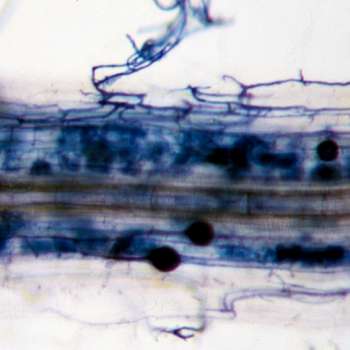
Mykorrhiza – røttenes røtter
Mykorrhiza er en symbiose mellom sopp og planterøtter. Mykorrhiza er svært vanlig hos de fleste plantearter, og er naturens måte å skaffe planter næring på. Soppen blir et organ som vokser på røttene og fungerer som en forlengelse og fin forgrening av disse.

Soppens funksjon er å ta opp næring som den transporterer tilbake til planten. Derfor kan man kalle mykorrhiza for ”røttenes røtter”. Hos mange planter skjer nesten alt opptak av nitrogen, fosfor og mange mikronæringsstoffer ved hjelp av mykorrhizasopp.
Mykorrhiza er svært vanlig i naturen, og ca 85 prosent av alle plantearter har mykorrhiza. Evolusjonsmessig er mykorrhiza svært gammel, og fossile data viser at mykorrhiza var med å etablere landplantene da disse koloniserte Jorda for ca 420 mill. år siden. Uten mykorrhiza hadde man derfor trolig ikke hatt landplanter i den utstrekning vi har i dag. At det i dag finnes planter som ikke danner mykorrhiza er et evolusjonsmessig nyere fenomen der enkelte plantearter har utviklet nye strategier eller mekanismer for næringsopptak.
.jpg)
Temaartikler
Publikasjoner
Forfattere
Nanna B. Svenningsen Stephanie J Watts-Williams Erik J. Joner Fabio Battini Aikaterini Efthymiou Carla Cruz-Paredes Ole Nybroe Iver JakobsenSammendrag
Det er ikke registrert sammendrag





.jpg?quality=60)
-copy.jpg?quality=60)
